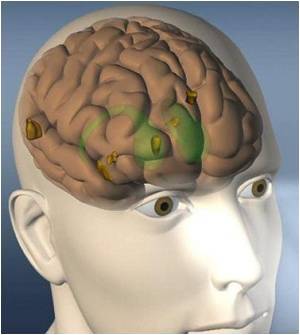Neocortex is a seemingly unique part of the human and mammalian brain, which is a layered structure on the outer surface of the organ where most higher-order processing is thought to occur.

The work, published in Proceedings of the National Academy of Sciences, confirms a 50-year-old hypothesis about the identity of a mysterious structure in the bird brain that has provoked decades of scientific debate. The research also sheds new light on the evolution of the brain and opens up new animal models for studying the neocortex.
"If you want to study motor neurons or dopamine cells, which are biomedically important, you can study them in mammals, in chick embryos, in zebrafish. But for these neurons of the cerebral cortex, we could only do that in mammals before," said Clifton Ragsdale, PhD, associate professor of neurobiology at University of Chicago Biological Sciences and senior author of the study. "Now, we can take advantage of these other experimental systems to ask how they are specified, can they regenerate, and other questions."
Both the mammalian neocortex and a structure in the bird brain called the dorsal ventricular ridge (DVR) originate from an embryonic region called the telencephalon. But the two regions mature into very different shapes, with the neocortex made up of six distinct cortical layers while the DVR contains large clusters of neurons called nuclei.
Because of this divergent anatomy, many scientists proposed that the bird DVR does not correspond to the mammalian cortex, but is analogous to another mammalian brain structure called the amygdala.
"All mammals have a neocortex, and it's virtually identical across all of them," said Jennifer Dugas-Ford, PhD, postdoctoral researcher at the University of Chicago and first author on the paper. "But when you go to the next closest group, the birds and reptiles, they don't have anything that looks remotely similar to neocortex."
Advertisement
Dugas-Ford, Ragsdale and co-author Joanna Rowell decided to test Karten's hypothesis by using recently discovered sets of molecular markers that can identify specific layers of mammalian cortex: the layer 4 "input" neurons or layer 5 "output" neurons. The researchers then looked for whether these marker genes were expressed in the DVR nuclei.
Advertisement
"Here was a completely different line of evidence," Ragsdale said. "There were molecular markers that picked out specific layers of cortex; whereas the original Karten theory was based just on connections, and some people dismissed that. But in two very distant birds, all of the gene expression fits together very nicely with the connections."
Dugas-Ford called the evidence "really incredible."
"All of our markers were exactly where they thought they would be in the DVR when you're comparing them to the neocortex," she said.
A similar experiment was conducted in a species of turtle, and revealed yet another anatomical possibility for these neocortex-like cells. Instead of a six-layer neocortex or a cluster of nuclei, the turtle brain had layer 4- and 5-like cells distributed along a single layer of the species' dorsal cortex.
"I think that's the interesting part, that you can have all these different morphologies built with the same cell types, just in different conformations," Rowell said. "It's a neocortex or a big clump of nuclei, and then in reptiles they have an unusual dorsal cortex unlike either of those."
Future experiments will test the developmental steps that shape these neurons into various structures, and the relative pros and cons of these anatomical differences. The complex language and tool-use of some bird species suggests that the nuclear organization of this pathway is also capable of supporting advanced functions — and even may offer advantages over the mammalian brain.
"If you wanted to have a special nuclear processing center in Broca's area to carry out language processing, you can't do that in a mammal," Ragsdale said. "But in a bird they have these special nuclei that are involved in vocalization. It's as if you have additional flexibility: You can have shorter circuits, longer circuits, you can have specialized processing centers."
Beyond the structural differences, the discovery of homologous neocortex cell types will allow scientists to study cortical neurons in bird species such as the chicken, a common model used for examining embryonic development. Such research could help scientists more easily study the neurons lost in paralysis, deafness, blindness, and other neurological conditions.
Source-Eurekalert











